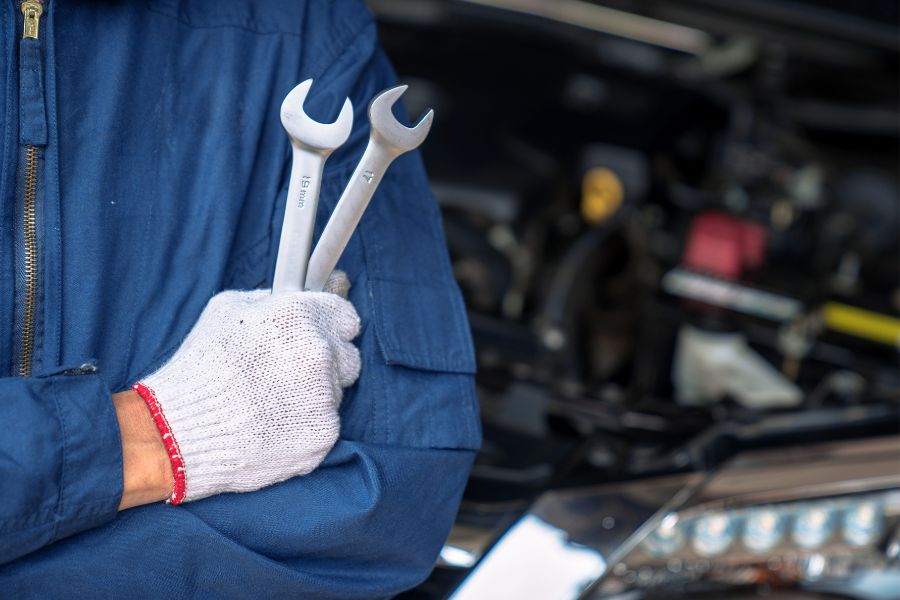The maintenance and servicing of vehicles is a central component of a professionally managed fleet. After all, only a technically flawless fleet guarantees safety, availability and cost-effectiveness. Neglect in this area not only leads to unnecessary costs, but can also have legal consequences.
What does maintenance & servicing mean?
A distinction is made between two categories in the vehicle fleet:
- Maintenance: Planned measures according to the manufacturer’s specifications – such as oil changes, inspections or the replacement of wearing parts. The aim is to maintain the functionality of the vehicle.
- Maintenance: Unplanned repairs or technical interventions to rectify defects and restore full operational readiness.
Both processes complement each other and are essential for operational safety.
Why are maintenance and servicing so important?
A broken-down vehicle costs time, money and nerves. Regular maintenance reduces it:
- Unplanned downtimes
- Workshop costs due to early detection of defects
- the risk of accidents
- Image problems due to customer breakdowns
In addition, compliance with maintenance intervals is part of the statutory owner liability obligations – especially in commercial use.
Legal background: Obligation for fleet managers
According to Section 31 of the German Road Traffic Licensing Regulations (StVZO), vehicle owners are obliged to ensure that their vehicles are always in a roadworthy condition. If an accident or defect occurs due to a lack of maintenance, the owner can be held liable – possibly even personally. Complete documentation of maintenance and servicing measures is therefore essential.
Digitization brings efficiency
Modern fleet software helps to centrally manage maintenance schedules and inspection dates. Advantages:
- Automatic reminders for HU, UVV, inspections
- Cost control through transparent workshop invoicing
- Simple planning of workshop visits
- Avoidance of duplication of work through structured processes
Digital support is a real efficiency gain, especially for larger fleets.
Conclusion: Maintenance saves costs – and nerves
Those who rely on consistent maintenance and timely servicing extend the service life of their vehicles, reduce costs and increase safety for drivers and third parties. It is not a chore, but a sensible investment in the long-term success of the fleet.

